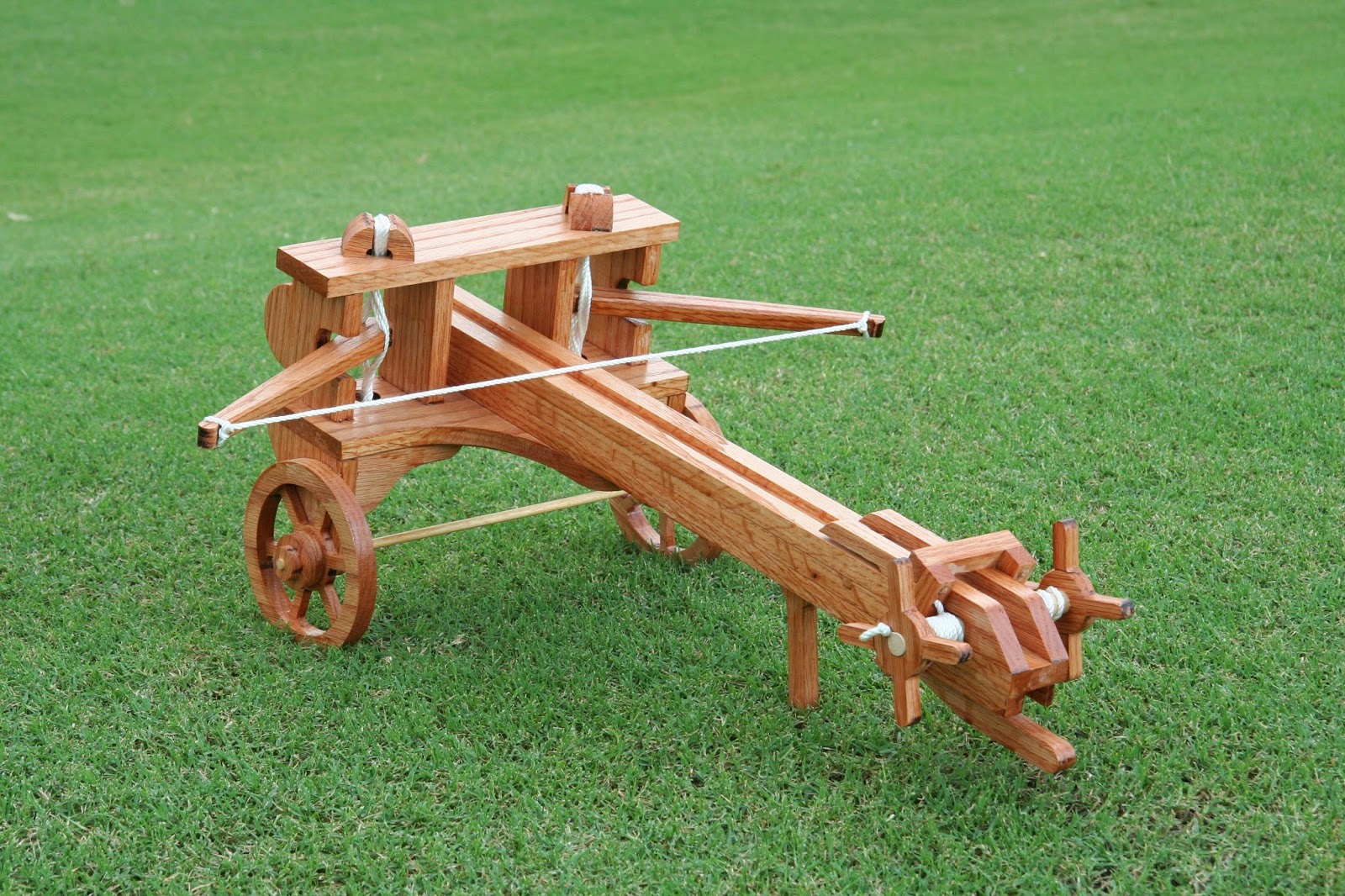Catapults were originally created as warfare in the Middle Ages. As the enemy's castle walls of defense grew taller and stronger, a tool was needed to shoot hostile projectiles above or through the barricades. A device was invented and named catapult, a term derived from the Greek word "katapultos." A catapult was a large machine on wheels with a basket attached to a long arm and a source of power for hurling objects. The very first catapult ever was invented around 400 BC in Greece, and it was quite different than the catapults that we see and use today. In fact, it was more similar to a crossbow, both in the way it looked and functioned. It was called the Gastraphete.
The Greeks were so pleased by the amount of damage that the Gastraphete caused that they assembled a bigger version of it. This was called a Ballista.
And finally, the trebuchet. A trebuchet is a form of a catapult, but it's dependent on a different power source: gravity.
In conclusion, catapults have clearly advanced with time, using one of four power sources: tension, torsion, traction, and gravity. Today, catapults vary in size, from a tiny toy catapult for small children to enormous weaponry catapults. Luckily, if it weren't for the ancient Greeks, we wouldn't have a device that has so many uses and purposes, whether it's being used to hurl flaming projectiles in battle, or being used for a science experiment, or simply being used exclusively for fun.



No comments:
Post a Comment